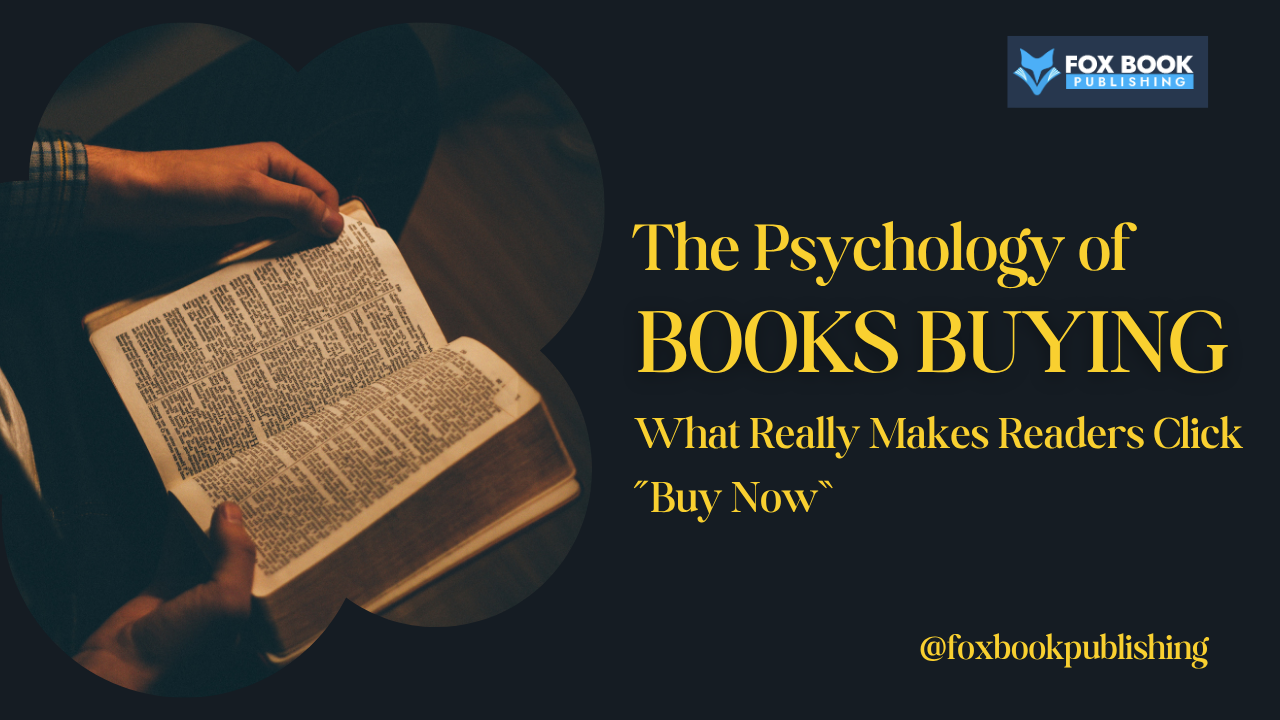Every author wants to believe readers choose based on quality.
They don’t. They choose based on feeling — a blend of trust, curiosity, and reward expectation that forms in less than five seconds.
Understanding that decision process is what separates consistent sellers from lucky launches.
1 Instant Judgments
A book cover triggers a fast, emotional reaction. Color, composition, and typography communicate genre before text does. Readers rarely read; they scan for belonging.
A thriller that looks like a romance won’t even get a click. Visual congruence creates comfort — comfort creates curiosity.
2 The Trust Shortcut
Readers buy authors, not titles. Every small credibility cue — professional layout, cohesive branding, or a verified review — builds subconscious assurance.
When a page feels familiar and trustworthy, the brain relaxes and purchases follow. This is why self-publishing must still look established.
3 Social Proof Loops
Humans imitate success. Seeing others buy, review, or discuss a book validates personal choice.
Algorithms amplify this by rewarding engagement spikes, creating circular credibility: attention attracts attention.
Even a handful of early reviews or visible testimonials can tip the loop in your favor.
4 Price Anchoring
Buyers rarely know what a book should cost. They rely on comparison.
A $14.99 paperback beside two $19.99 options feels affordable. The same price next to $9.99 looks expensive.
Successful publishers manage the surrounding context, not just the tag itself.
5 Emotional Framin
Readers justify purchases intellectually but decide emotionally.
Titles and subtitles that signal transformation — “restore focus,” “reclaim energy,” “find purpose” — activate hope.
Hope, not information, drives action.
6 The Power of Micro-Commitments
Free chapters, lead magnets, and previews build micro-yes moments before the sale. Each small commitment increases the likelihood of the next.
Amazon’s “Look Inside” feature is more than preview — it’s behavioral conditioning.
7 Cognitive Ease
Fluent design feels true. Hard-to-read fonts, cluttered layouts, or long paragraphs create friction, and friction feels risky.
Readers equate smooth processing with honesty. Clean design sells because the brain rewards effortlessness.
8 The Scarcity Effect
Limited-time pricing, bonus content, or signed editions activate loss aversion. People act faster when scarcity is visible. Used ethically, scarcity motivates; used manipulatively, it destroys trust. Balance is everything.
9 The Reader Identity Mirror
Readers buy books that reinforce who they think they are — or who they hope to be.
Every strong title whispers, “This is for people like you.”
Authors who understand their reader’s self-image write blurbs that feel like personal invitations, not advertisements.
10 Turning Psychology into Strategy
Behavioral triggers aren’t manipulation when used transparently. They’re empathy translated into structure — understanding how people choose so you can serve them better.
FoxBookPublishing Support and Free Consultancy
Great writing gets attention; great psychology gets action.
FoxBookPublishing helps authors convert attention into sales through reader-behavior research, cover and metadata optimization, description writing, Amazon setup, and strategic launch + post-launch marketing that aligns with real human decision patterns.Schedule a free discovery call to review your book’s buyer journey or choose a paid consultancy session for a complete behavioral-marketing strategy.
Visit FoxBookPublishing.com to make your book not just seen, but chosen.

